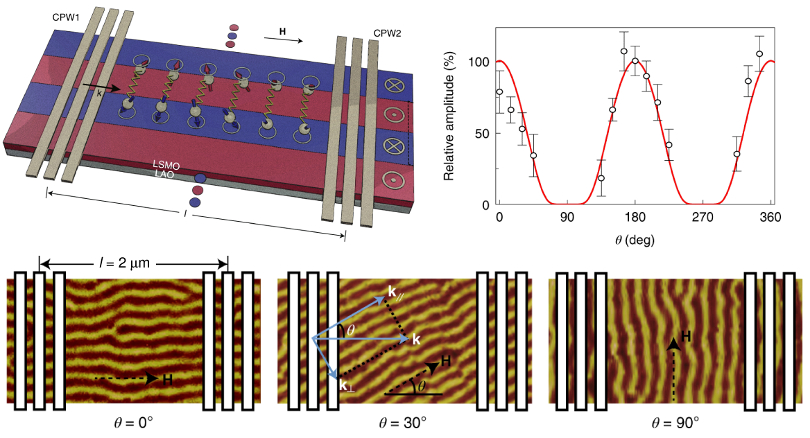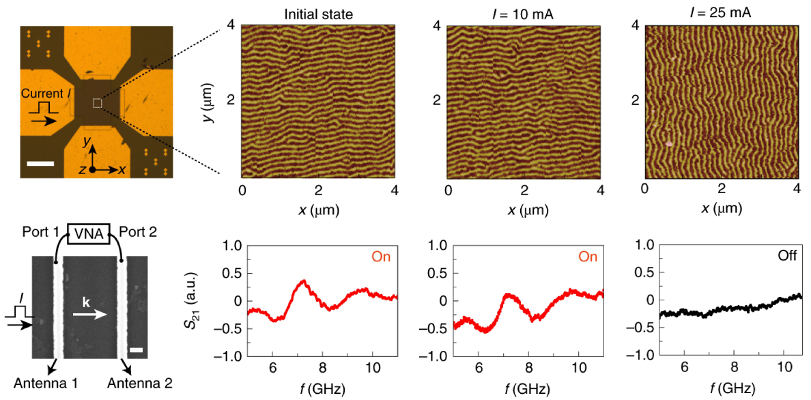AFM Systems
AFM Accessories
Learning
Contact Us
 Part of the Oxford Instruments Group
Part of the Oxford Instruments Group
Researchers investigated spin waves in films containing periodic antiparallel domains. Magnetic AFM measurements helped reveal a high-frequency mode that propagated along the domain stripes and could be reprogrammed by electric currents.

Transmitting information via spin waves in ordered magnetic materials could provide a new paradigm for nonvolatile logic and memory, with benefits including higher speed and lower power consumption. Antiferromagnetic-type spin waves are especially attractive for this purpose, but they have proven difficult to achieve in practice.
A team of researchers at Beihang University and other institutions in China, the U.S., and the Netherlands explored spin-wave propagation in thin films of the oxide ceramic La0.67Sr0.33MnO3 (LSMO). LMSO films naturally form periodic domains of alternating up and down magnetization about 100 nm wide.
Experiments and modelling indicated a high-frequency (~10 GHz), antiferromagnetic-type spin wave propagating along the domain stripes. Nanoscale magnetic AFM imaging showed the stripe domain alignment could be rotated by varying the angle θ of the initial applied magnetic field. Further experiments also showed the domain orientation could be reprogrammed by applying small pulses of electric current.
By demonstrating how to excite spin waves and electrically control their propagation, the results open the door to reconfigurable spin-wave devices for applications in spintronics and magnonics.

MFP-3D Infinity with Variable Field Module
The periodic nanodomains were sensed with magnetic force microscopy (MFM) using an MFP-3D Infinity AFM and a cantilever tip coated with a CoCr magnetic film. A Variable Field Module (VFM) was used to form the nanodomains by applying a magnetic field of 150 mT for 1 s. The ability to apply in-plane and out-of-plane fields with adjustable amplitude and angle makes the VFM a versatile tool for magnetics research. And unlike other commercial AFM solutions, it uses permanent magnets that produce no heat, thermal drift, or mechanical vibration.
Citation: C. Liu, S. Wu, J. Zhang et al., Current-controlled propagation of spin waves in antiparallel, coupled domains. Nat. Nanotechnol. 14, 691 (2019). https://doi.org/10.1038/s41565-019-0429-7
Note: The data shown here are reused under fair use from the original article, which can be accessed through the article link above.
Author: Asylum Research
Category: Technical Article
